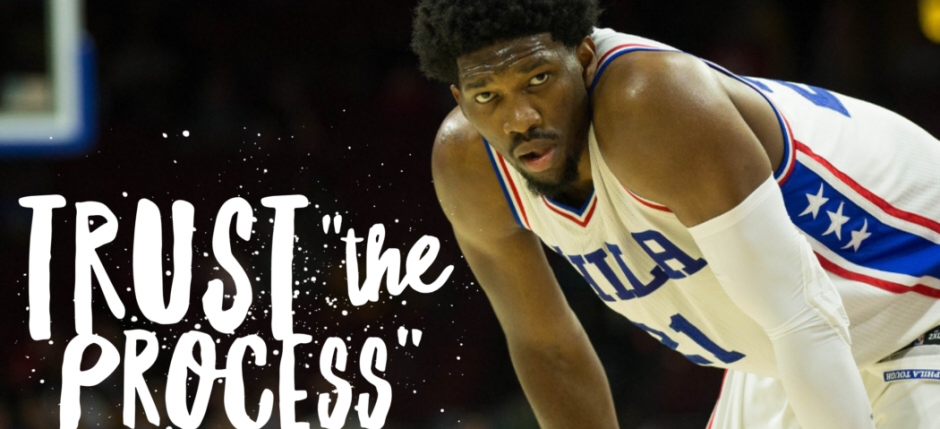Trust The Process: The Need for a Multiyear Rebuilding Mantra
Two years ago, the Philadelphia 76ers won 10 out of 82 basketball games and were widely considered to be the worst pro basketball team in history. It was all set up a few years earlier by a mediocre season when the team decided to, well, stop trying.
Under new leadership, Philadelphia stripped their roster and intentionally sucked four years in a row. Turns out, they were just playing a different game than everybody else. The Sixers branded their bold long-term strategy under one simple phrase.
Trust. The. Process.
Today, #TTP has begun to infiltrate all aspects of society. Chances are you’ve already heard it from a teacher, mentor, or friend. Now, the Sixers are looking like a serious contender in the NBA playoffs, with a plethora of young talent and more draft picks coming. How did trusting the process work, and how can college student organizations do it?
Understand how to work around one year terms: Stop me if you’ve heard this one before… excited college leader begins their term with a different goal than their previous leader, but ends up hitting similar roadblocks and burning out only for a new person to keep the cycle going. This has always been the case with NBA teams, with common annual struggles including striking out on draft picks, key players leaving through free agency, or overall lack of identity. The Sixers needed to adapt a strategy that would last several terms so future leaders would buy in and keep it going. Does your chapter have such a mantra?
Embrace the criticism: During the early stages of #TrustTheProcess, tons of people gave the Sixers heat. Many “experts” said they were infecting their whole organization with a culture of losing, which inspired the mantra in the first place. But the Sixers politely laughed back. They slashed ticket prices, made game days fun, and brought back the catchiest team song of all time. They sold fans on going to games to see growth, have fun, and not care much about the results-oriented metric of success (the scoreboard). Fraternity & sororities have metrics of success, as evidenced by the pressure to dominate unofficial rankings while “not trying too hard.” Many groups struggle with that belief conflicting with a desire to be different, which usually leads to an inability to do either well. The Sixers proved different can be fun, how are we helping students prove it, too?
The right advisor: While the process has caused frequent changes in their roster, the Sixers chose a coach carefully beforehand knowing he’d be there for the long haul. Bret Brown was from a championship team, willing to commit to several years of “losing” to achieve long-term goals, and (most importantly) expected to build a trusting mentorship with his players. Too many chapters we see do not have a great relationship with their advisor, or do not know what they should be looking for. These same students who make their own daily choices for success in the classroom often don’t with their most pivotal extracurricular opportunity. How can the advisor format be adapted where undergraduates are more inspired to select, develop and enjoy working with their advisors (especially volunteers)?
Don’t Ditch the Seniors: In college life and sports, culture issues are inspired by lazy veterans. That doesn’t mean they’re not important to success. The Sixers shed plenty of old players, but always brought back a few new ones who had seen playoff success and were willing to mentor younger players. Most chapters complain about their seniors as a whole, without taking the time to recognize the good ones and find ways to get them more involved. The bars are fun, but memorable conversations with like-minded people will always be a superior product. How is your chapter giving your best seniors a more compelling product than the bar?
Invest in something. Anything. Too many fraternity & sorority communities are sitting around right now with too many options of things to invest their time and resources in. I can sort of see why, with all the pressure from different directions and and motives. But there are too many quality volunteers, outside experts, and potentially amazing members out there who are not utilized. Investments don’t always have to be expensive, but they have to be made. The Sixers found most investments through the draft (recruitment) while putting the bulk of their financial investment in a long-term coach (relationships & development). Are you investing in your own recruitment & new member development? Here’s some free stuff to get started.
Steadfast Commitment: A couple years into the Sixers intentional failure, experts began admitting something interesting: there was almost no way for it to not work (unless they panicked and stopped). Teams mess up on top 5 picks every year in the draft, but they had never got them this many years in a row. Even with an element of luck involved, it was getting to a point where the Sixers didn’t even need luck. Their #1 overall pick missed most of this season, and they didn’t even need much from him. When the pond is stocked enough, a little time is all you need to catch fish. If we love talking about how big our problems are, why are we unwilling to commit to most long-term solutions? Why are we so obsessed with “quick fixes”?
We live in a results-focused society, which makes the art of the process that much more critical. Every organization should be seeking to incorporate #TrustTheProcess right now, and it needs to be through a digestible mantra just like the Sixers did. Ultimately, the definition of digestible is up to the active members.
What is your organization’s mantra? How are you trusting the process? Here’s how Phired Up is transforming fraternity through Get Off The Stage.

